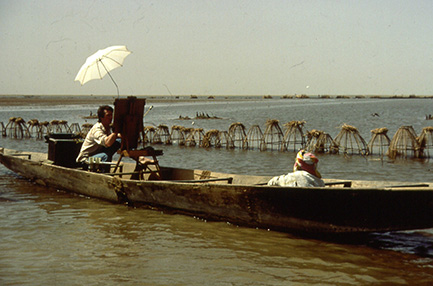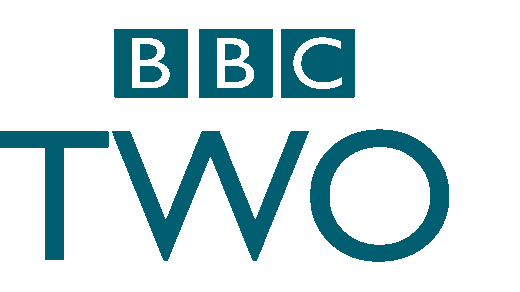Films, videos and film-making |
A brief historyAs a young lad in the early 1960’s I remember going to see some of the films made by the RSPB film unit. Development officers from RSPB headquarters at The Lodge in Bedfordshire used to travel around the country with a projector showing 16mm reel-to-reel films on screens in church halls, village meeting rooms and small theatres. It was a brilliant way to serve and entertain the RSPB membership (as well as sell some merchandise). Swallows at the Mill was one production I remember capturing my imagination; it was in colour which made it more lyrical than some of the black and white films we were watching on television at the time. On TV there were programmes by Armand and Michaela Dennis in Africa, there were the Zoo Quest adventures with David Attenborough, and Peter Scott had his Look programmes. The places and wildlife they encountered and commented on was fascinating and absolutely captured my imagination. The individual presenters were heroes and I remember once attending an event at The Assembly Rooms in Norwich where Armand and Michaela Dennis gave a presentation. I queued to get a signed copy of their latest book On Safari, which I still have! Peter Scott particularly inspired me as he was also a renowned artist. Although I was enthusiastic about my art and was painting and drawing all the time, film also interested me. I was energized by its potential, after all somebody had to be behind all those wildlife camera lenses, all those filming trips and expeditions needed planning and assistants, and there had to be creative teams helping to make things happen behind the scenes, and being a producer or director definitely sounded exciting. After A-Levels and aged about 19, I enrolled on a foundation course at Great Yarmouth College of Art and Design. A three-year Fine Art degree course at Leicester Polytechnic followed where in the first year I began working with super-8 film and a very early video camera available in the adjacent Graphics Department and made use of the tiny film studio they had. The first unsuccessful effort was a very short film about wildlife in churchyards in and around Leicester. Back in the Fine Art Department I spent a lot of time in the printmaking studio, which I found equally exciting and took to the diciplines with great enthusiasm. But I began to feel that making a career purely as a visual artist might be more difficult than hoped. Film seemed like a better propect. In my final year, still eager to learn more about wildlife film-making, I made contact with the RSPB film unit and volunteered to do anything to help. Not long after I found myself with a husband and wife camera team (Anthony and Liz Bomford) who were in Wales working on a film about red kites. They needed someone to help carry equipment and put them into the camouflaged nest hides and retrieve them late in the day. Also, I had to get on with general duties keeping the base camp functioning and running errands - and sometimes handling the camera and sound equipment presenting oppportunities togain some practical knowledge. At the end of my time at art school I invited the head of the RSPB film unit, Anthony Clay (who I'd already been in touch with about the volunteering in Wales) to view my final BA degree presentation. Soon after I was very lucky when he offered me a full-time job at the RSPB Film Unit as a Trainee Film Production Assistant based at their offices in Sandy, Bedfordshire. My 18 months there were fantastic. I was given every kind of job - standing around in the editing suit handing glue and scissors to the film editor; driving to the Rank film labs in West London to deliver raw film or retrieve 'rushes'. Sometimes I found myself at the BBC Natural History Unit in Bristol dropping off rough-cut sequences for films we were collaborating on, or loading film magazines and cleaning cameras. Once had the opportunity to shoot a short film sequence of my own on birds eating berries in winter. It was all very thrilling and I was hugely excited by the possibilities that film offered. I began to see that it might be possible to combine my creative enthusiasm and artistic temperament with a passion for the natural world and maybe find a place working in wildlife film-making. Then luck struck! At the time I was house-sharing with RSPB colleagues and socially we mixed with a fantatstic gang of scientists, field assistants and adventurers from the British Antarctic Survey (BAS) nearby in Cambridge. They used the same pubs and shared the same kinds of enthusiasms and friendships. Among them was Pete Prince who I got on well with and who'd just returned from two and a half years on Bird Island and South Georgia in the remote South Atlantic. He asked if I'd like to travel back there with him to be a field assistant on a seabird research programme he had just been appointed to put together. It was at very short notice, but it was an offer and opportunity I couldn't refuse! Every moment down south on Bird Island (three summers 1975, 1976 and 1977) when I was not required for a field assistant’s task I was drawing and sketching - at the same time realising that there was huge potential for making films about the penguins, albatrosses, seals and whales that lived all around us on the island. So, after the first season - in colaboration with Pete and with permission from BAS - we returned to the UK briefly for the summer to borrow money and acquire cameras and lenses, buy film stock, light-meters, changing bags, travel cases and all the necessary kit to make a film. Through my previous contact with BBC Natural History Unit we got in touch and they encouraged us to make a film but offered no commitment or money upfront. Instead, the BBC showed a great willingness to view the material when we got back and decide then whether there was a film to be made from it all. Fortunately the material was up to the mark. We had worked to a script about fur seals and we knew the island and its wildlife so well there was definitely a story to be teased from the footage and the hours of sound recordings. The first film we made The Private Life of the Fur Seal was subsequently shown on BBC1 television as part of the Natural World series. A second programme telling a more complex Antarctic story, The 150 Million Ton Shrimp was made the following season and the finished film was shown on BBC2 television two years later in the World About Us series. After finally returning home opportunities to develop fine art painting, book illustration work and other art ideas grew and grew keeping me very busy. It seemed wildlife film-making was a very exciting phase and not the main driver of what I was trying to do with expressing a passion for the natural world. Then, after writing and illustrating An Artist on Migration in 1991, a book about bird migration with chapters centred in West Africa, I showed part of the story about the seasonal floods in the Sahel to a great film director friend David Cobham. He took the idea of a documentary film about the incredible nature of those floods to the BBC and a 50-minute film was commissioned. Beyond Timbuctu was shown in the BBC2 World About Us series a year later. Following the perceived success of that and the earlier programmes - and working with David again as director, and the same production company, I was commissioned by Channel 4 Television to write and present the six part Birdscape series about a range of British landscapes and the lives of some of the birds, and some of the people associated with them. The series aired in 1991. I'd been lucky for 15 years or so being able to work with others making films that were all linked to painting and drawing in the field. But gradually it was obvious that opportunities to exhibit work were expanding at the same rate as ideas and opportunities for future film projects started to diminish. Production teams moved on, new department heads wanted to refresh programme themes, and commissioning editors were looking for brilliant new programme ideas and formats. So being an artist began taking over my working life completely and I've been grateful for every opportunity it has presented ever since. But I'm still interested enough in film to sometimes take a little GoPro camera with me out into the field. The aim is to make short films, but that seldom happens as things quickly get busy again in the studio as soon as I'm back and there never seems to be the time to edit and sort a decent sound track - but every so often I enjoy having a go!
| Beyond Timbuktu
|
© Bruce Pearson 2025. All rights reserved


